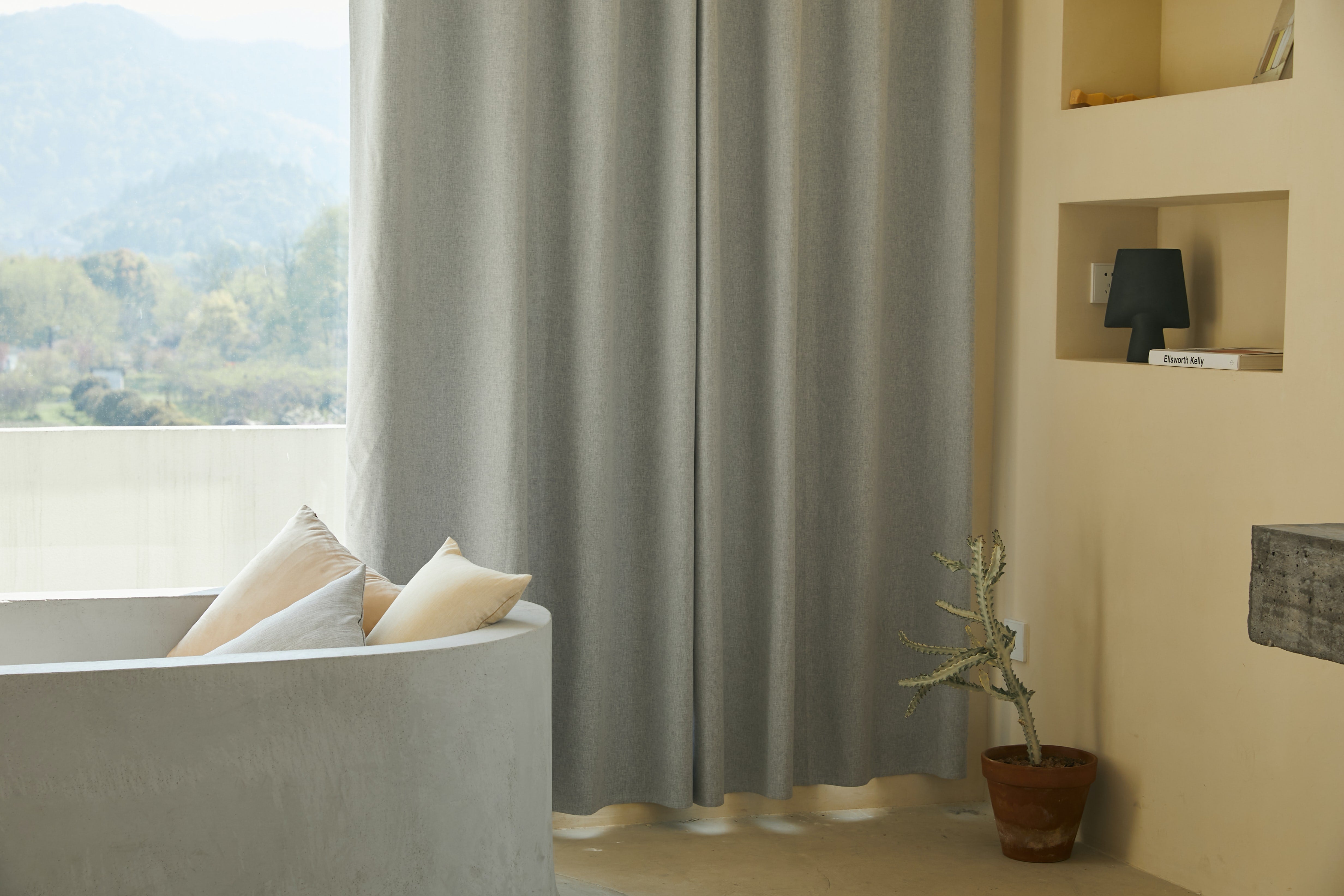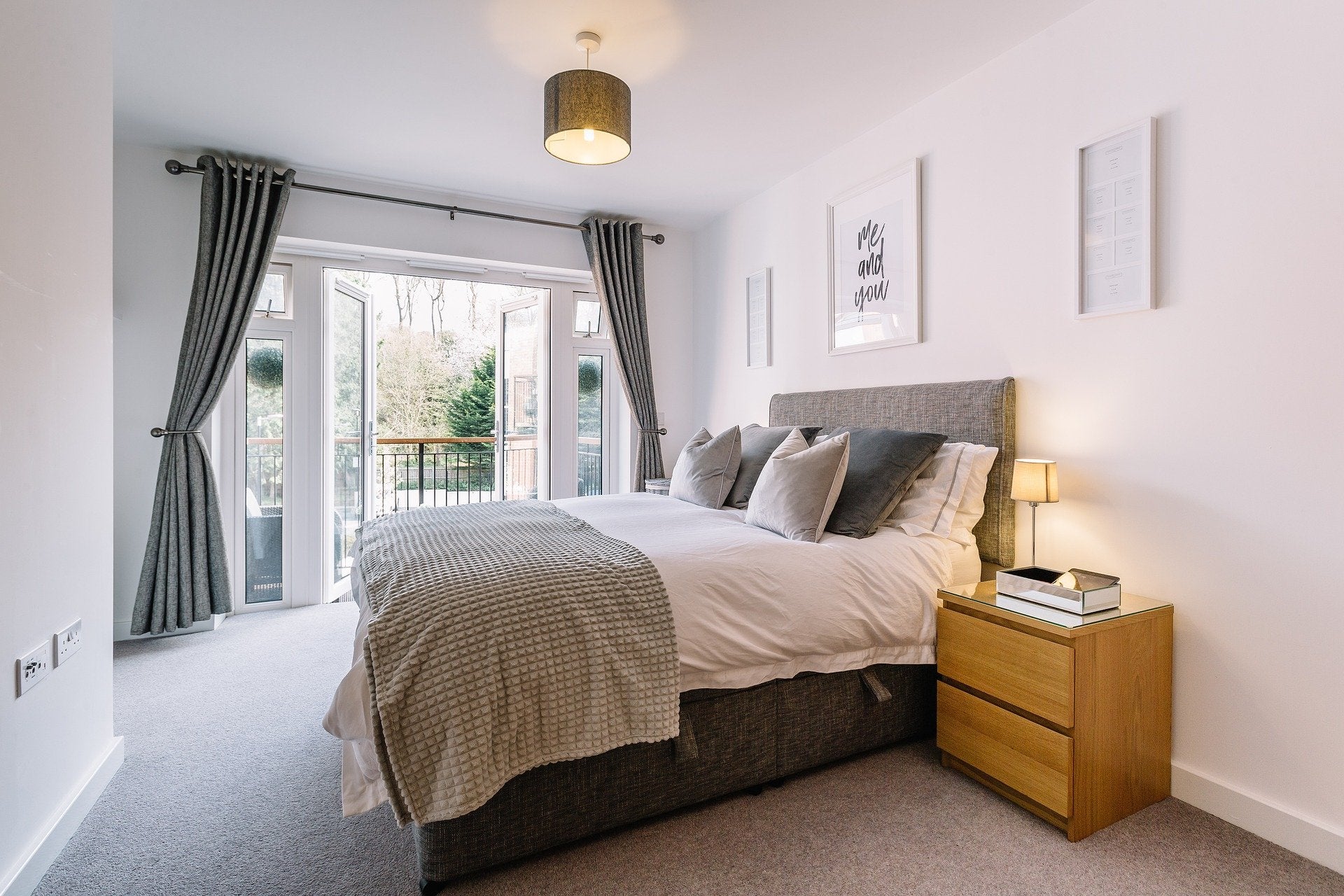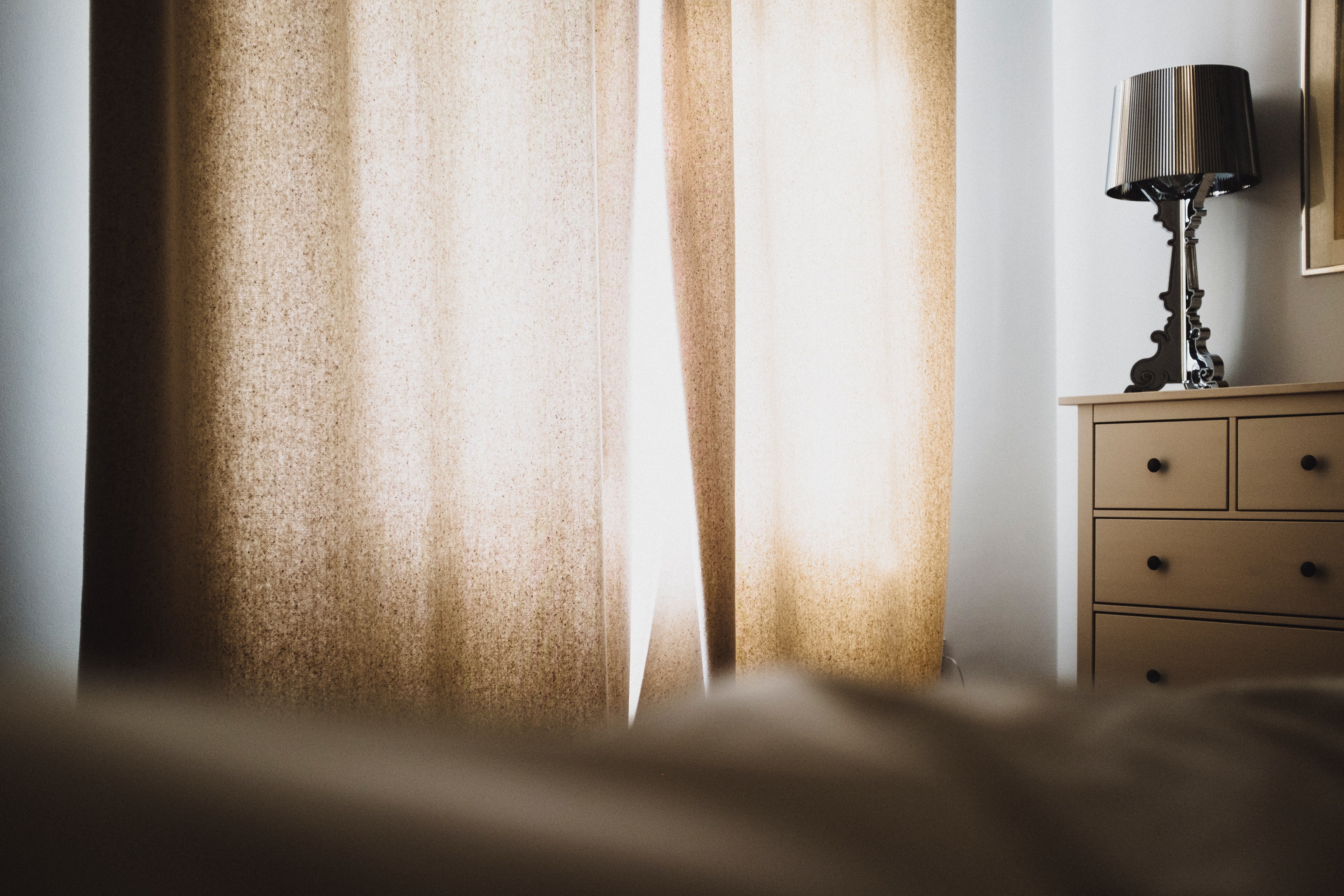
Difference Between Curtains, Drapes, Shades, and Blinds
When deciding on window treatments, you ought to consider the four general types: curtains, drapes, shades, and blinds. People may use these terms interchangeably sometimes, especially drapes and curtains. Yet, while all of the four options can be used with various decorating styles and rooms, each has its own unique characteristics.
So you can make the best decision on your window treatment, we're listing down the similarities and differences between curtains, drapes, shades, and blinds for your easy learning.
Curtains
For: All rooms
Material: Variety of fabrics
Light blocking: Sheer to blackout
Curtains are panels of fabric that are usually sold and installed in pairs. Curtains are widely available in a variety of widths, lengths, fabrics, colours, and patterns. They make for a versatile and suitable choice for any and every room of the home, even bathrooms and kitchens. Curtains tend to soften a space or add to the visual appeal via their pops of colour and texture.
Curtains are made to be hung from a rod; whether the rod is plain or decorative is up to you. Sometimes curtains even come with a fabric pocket sewn at the top that slips over the rod, covering it when closed. Other curtains have steel grommets or fabric tabs sewn at the top to easily slide over an installed rod. Less common are curtains with rings or hooks that clip to the top of the curtains and attach them to the rod.
Certain curtains are called sheers due to the fabric offering minimal light blocking and next-to-no privacy. As an example, the short, sheer curtains you may see only covering the bottom half of a window atop a sink—typically matching with a balance right across—are called café curtains.
There are also other curtains that are made of heavier fabricmarketed as blackout curtains, as they filter out most of the light from outside. You can also choose to use your curtains in conjunction with blinds or shades for optimal light blocking, especially in your bedrooms.

Drapes
For: Bedrooms
Material: Variety of heavy fabrics
Light blocking: Moderate to blackout
When choosing between drapes and curtains, there isn't a whole lot to tell them apart by. Similar to curtains, drapes have the purpose of blocking light, offering privacy, and adding a visual pop to a room. Drape panels are also typically sold as pairs. And like curtains, the installation of drapes still involves hanging them from a rod, attached by rings, hooks, grommets, or a fabric sleeve.
What really distinguishes drapes from curtains is that drapes are often more effective at blocking all outside light, as they are lined with heavy fabric material. Additionally, the visible fabric of drapes is also normally heavy and stiff. Common materials used for drapes include velvet, damask, and silk. You may choose any colour of fabric according to your tastes, making sure that your drapes won't go out of style anytime soon. Patterns are an option as well, though most drapes aren't heavily patterned, as most are simply solid or textured.
The ability of drapes to block out light makes them perfect for the bedroom, though both drapes and curtains work just as well for living rooms and other spaces, depending on your style and needs. Also, because drapes are heavy and normally pleated on the top, they tend to give off a more formal vibe to the room.
Sometimes called draperies, this type of window treatment is normally made long enough to cover from slightly above your window to the floor. Some may even choose to allow drapes to pool on the floor. Whatever kind of esthetic you're going for, drapes will make a good choice!

Shades
For: All rooms
Materials: Fabric, vinyl, bamboo
Light blocking: Moderate to blackout
Shades are sold individually and come in many different fabric types, though some uncommon materials like vinyl and bamboo are also becoming increasingly popular. Unlike drapes or curtains, shades are attached to a rod or frame and are sized to fit within the window's frame— whereas the latter and the former, which hang below the sill.
To let the light in the room or take a peek outside, one simply needs to raise the shades via a cord, roller, or lifting mechanism attached to the top. Upon lifting, a shade will either bunch or roll around the rod, depending on the style used.
A common and inexpensive choice of shades is roller shades. It is so named because when receding, the shade material rolls around a rod situated at the top. Other popular types of shades are Roman shades, which constrict into deep pleats; balloon shades, which, as the name implies, balloons into a ball of fabric; and tie-up shades, which use a fabric tie to fasten them and hold them wide open. Considering the countless styles, colours, and patterns, you can certainly find a window shade to match any decorating theme—whether casual or formal.
Although you can use window shades on their own for a dressy occasion, many people prefer to situate shades underneath curtains or hidden by a valance. Doing this improves their ability to block light, although shades alone can serve as suitable blackout window treatments so long as they're made of thick, lined fabric.
Blinds
For: All rooms
Materials: Vinyl, wood, aluminium
Light blocking: Moderate to high
Shades and blinds are similar in that they lift and lower via a cord or other mechanisms. The distinguishing factor between shades and blinds is that the latter is not a solid length of material. Blinds have slats, also commonly known as louvres, that tilt open to allow light to pass or close to make sure darkness and privacy. Unlike shades, blinds need not be fully raised to see through; they can simply be titled open slightly.
The standard depths for blind slats are 1/2 inch, 1 inch, or 2 inches- in the latter case called Venetian blinds. The blinds' length and width are meant to fit within your window's frame. While the most common kinds of slats on blinds are horizontal, there are also blinds with hanging vertical slats, generally used for sliding doors or windows.
Regarding light-blocking abilities, drapes, curtains, and blinds, all do a stand-up job. However, with blinds, light can still enter through the spaces between louvres. You can still use blinds for your bedrooms and enjoy privacy. Simply top them with curtains to block more of the light.
Blinds are available in a variety of colours and wood tones, albeit rarely patterned. By topping your blinds with curtains or a valance, you can soften the blind's appearance and add some visual extra-ness.

Now that you know the difference between curtains, drapes, shades, and blinds you can finally pick which one is best for your room. Check out at SAG Custom Curtains, they provide the highest quality of custom curtains.


